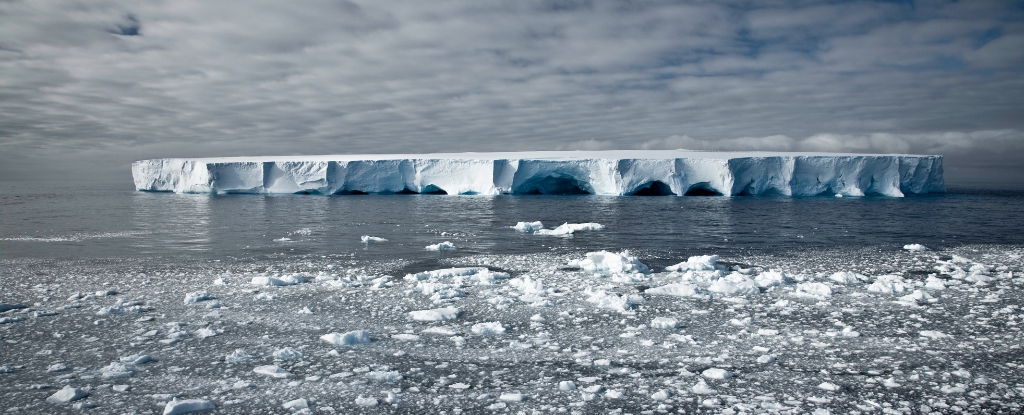It’s now almost inevitable that 2023 will be the warmest year ever recorded by humans, probably the warmest for at least 125,000 years.
Multiple temperature records were smashed with global average temperatures for some periods well above 1.5°C. Antarctic sea ice loss is accelerating at frightening rates along with many other indicators of rapid climate change. Does this mean 2023 is the year parts of the climate tip into a much more dangerous state?
Most people expect that if a system, like someone’s body, an ecosystem, or part of the climate system, becomes stressed, it’ll respond fairly predictably – double the pressure, double the impact, and so on.
This holds in many cases, but is not always true. Sometimes a system under stress changes steadily (or “linearly”) up to a point, but beyond that far bigger or abrupt changes can be locked in.
An example of such “nonlinear” changes are “tipping points”, which happen when a system is pushed past a threshold beyond which change becomes self-sustaining. This means that even if the original pressure eased off the change would keep on going until the system reaches a sometimes completely different state.
Think of rolling a boulder up a hill. This takes a lot of energy. If that energy input is stopped then the ball will roll back down. But when the top of the hill is reached and the boulder is balanced right at the very top, a tiny push, perhaps even a gust of wind, can be enough to send it rolling down the other side.
The climate system has many potential tipping points, such as ice sheets disappearing or dense rainforests becoming significantly drier and more open. It would be very difficult, effectively impossible, to recover these systems once they go beyond a tipping point.
We along with 200 other scientists from around the world just published the new Global Tipping Points Report at the COP28 UN climate talks in Dubai.
Our report sets out the science on the “negative” tipping points in the Earth system that could harm both nature and people, as well as the potential “positive” societal tipping points that could accelerate sustainability action.
Here we look at the key messages from report sections on tipping points in the Earth system, their effects on people, and how to govern these changes.
Tipping points in air, land and sea
Having scoured scientific evidence of past and current changes, and factored in projections from computer models, we have identified over 25 tipping points in the Earth system.
Six of these are in the icebound parts of the planet (the “cryosphere”), including the collapse of massive ice sheets in Greenland and different parts of Antarctica, as well as localised tipping in glaciers and thawing permafrost.
Sixteen are in the “biosphere” – the sum of all the world’s ecosystems – including trees dying on a massive scale in parts of the Amazon and northern boreal forests, degradation of savannas and drylands, nutrient overloading of lakes, coral reef mass mortality, and many mangroves and seagrass meadows dying off.
Finally, we identified four potential tipping points in the circulation of the oceans and atmosphere, including collapse of deep ocean mixing in the North Atlantic and in the Southern Ocean around Antarctica, and disruption of the West African monsoon.
Human activities are already pushing some of these close to tipping points. The exact thresholds are uncertain, but at today’s global warming of 1.2 °C, the widespread loss of warm water coral reefs is already becoming likely, while tipping in another four vital climate systems is possible. These are Greenland and West Antarctic ice sheet collapse, North Atlantic circulation collapse, and widespread localised thaw of permafrost.
Beyond 1.5 °C several of these become likely, and other systems like mangroves, seagrass meadows, and parts of the boreal forest start to become vulnerable. Some systems can also tip or have their warming thresholds reduced due to other drivers, such as deforestation in the Amazon.
It can be hard to comprehend the consequences of crossing these tipping points. For example, if parts of the Amazon rainforest die, countless species would be lost, and warming would be further amplified as billions of tons of carbon currently locked up in trees and soils makes its way into the atmosphere.
Within the region, this could cause trillions of dollars of economic impacts, and expose millions of people to extreme heat.
Given the sheer scale of risks from tipping points, you may assume that economic assessments of climate change include them. Alas, most assessments effectively ignore tipping point risks. This is perhaps the most frightening conclusion of the new report.
Human societies could tip into something much worse
There is also the potential for negative tipping in human societies, causing further financial instability, displacement, conflict or polarisation. These would hamper our efforts to limit further Earth system tipping points, and could even bring about a shift to a social system characterised by greater authoritarianism, hostility and alienation that could entirely derail sustainability transitions.
A further risk is that most of Earth’s tipping systems interact in ways that destabilise one another. In the worst case, tipping one system makes connected systems more likely to tip too. This could produce a “tipping cascade” like falling dominoes.
The Global Tipping Points Report makes clear that climate change is a key driver for most of these tipping points, and the risk of crossing them can be reduced by urgently cutting greenhouse gas emissions to zero (which “positive tipping points” could accelerate).
To help prevent tipping points in the biosphere, we’ll also need to rapidly reduce habitat loss and pollution while supporting ecological restoration and sustainable livelihoods.
Ambitious new governance approaches are needed. Our report recommends international bodies like the UN’s climate talks urgently start taking tipping points into account. Their understanding of dangerous climate change needs a serious update.![]()
James Dyke, Associate Professor in Earth System Science, University of Exeter and David Armstrong McKay, Researcher in Earth System Resilience, Stockholm University
This article is republished from The Conversation under a Creative Commons license. Read the original article.





